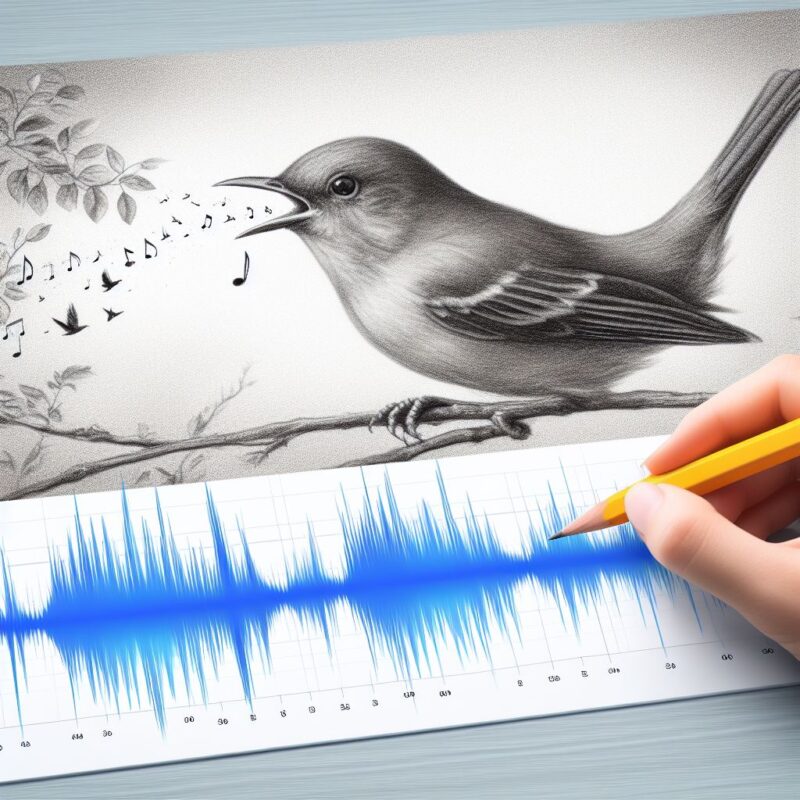Unveiling the Secrets of Habitats: A Guide to Recognizing and Predicting Bird Species

Introduction
Exploring the world of birds is an endlessly fascinating endeavor. Birdwatchers and ornithologists alike understand that the key to successful birdwatching lies in recognizing the diverse habitats that these winged wonders call home. Habitats are not just physical spaces; they are ecosystems with distinct environmental features, and understanding them is a powerful tool for predicting the bird species one might encounter. In this article, we’ll delve into the art of recognizing habitats and how they can be used to forecast the avian inhabitants within.
What Are Habitats?
Habitats are defined as specific places or environments where particular species live and thrive. They encompass various natural elements such as climate, vegetation, topography, and the availability of food and water. The world is replete with diverse habitats, ranging from lush rainforests and coastal wetlands to arid deserts and urban gardens.

Recognizing Habitats
Learning to recognize habitats is an essential skill for any bird enthusiast. Here’s how to go about it:
- Study Field Guides:
Start by studying field guides and books that provide information about different habitats and the species commonly found within them. These guides often include descriptions and illustrations of characteristic vegetation, landscape features, and ecological niches. - Observe the Landscape:
Spend time in the field and observe the surroundings. Take note of the dominant plant species, the terrain, and any distinctive features such as water bodies, cliffs, or open fields. Recognizing these environmental elements will help you categorize the habitat. - Pay Attention to Sounds:
Birds often provide auditory cues to their habitat. Different species prefer specific habitats, and recognizing their calls can be a telltale sign of the environment you are in. For instance, the calls of marsh birds in wetlands or warblers in dense woodlands can provide valuable clues. - Consider Seasonal Changes:
Habitats can change with the seasons. A field that is a meadow in the summer may transform into a wetland in the spring due to flooding. Understanding these seasonal shifts is vital for predicting the birds that frequent the area.

Predicting Bird Species Based on Habitats
Once you’ve mastered the art of recognizing habitats, you can use this knowledge to predict the bird species that inhabit these environments:
- Use Field Guides:
Refer to bird field guides that specify the birds commonly found in particular habitats. These guides often categorize species according to the environments they prefer. - Observe Behavioral Cues:
Certain bird species exhibit specific behaviors that are indicative of their preferred habitat. For example, raptors soaring high in the sky are often associated with open landscapes, while shorebirds are commonly found near water bodies. - Understand Ecological Niches:
Consider the ecological niches within habitats. For instance, woodpeckers are typically found in forests and woodlands, while swallows prefer open fields and marshes. Recognizing these niches can help you predict the presence of certain bird species. - Be Patient and Persevere:
Not all habitats reveal their bird inhabitants immediately. Some species may be more elusive than others. Patience and perseverance are key qualities for a successful birdwatcher.
Conclusion
Learning about habitats and using them as a predictive tool for bird species identification can significantly enhance your birdwatching experiences. It adds a layer of excitement and understanding to your adventures, allowing you to better appreciate the diverse avian world. By immersing yourself in the intricacies of habitats, you’ll become a more knowledgeable and skilled bird enthusiast, ultimately connecting more deeply with the natural world and its fascinating winged inhabitants.
We are affiliated with Amazon and make a small royalty at no extra cost to you, so by using the links below to purchase your next birding gear you can help us to maintain Simply Birding and continue to bring great content:

Canon, Sony and Nikon cameras: https://amzn.to/4gmtDWk

Lenses for bird photography: https://amzn.to/3WG3vyF

Tripods: https://amzn.to/3PVDNT0

Memory Cards: https://amzn.to/3PV4Y0z

Bird books: https://amzn.to/42NgsKS

Binoculars for bird watching: https://amzn.to/42G0nGZ

Spotting Scopes for bird watching: https://amzn.to/4hom5nq















